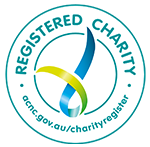NCACL sought authors and illustrators whose books featured diverse cultures where those within and outside the culture interact. Interactions provided valuable insights and understanding for characters, as well as readers. Often these books featured political issues, ideological perspectives, historical and religious movements over time and in various countries. Such stories enabled both the characters within books and readers of these books to ‘walk in another’s shoes’, thus gaining an understanding of cultures different from their own.
The content of these 340 books varied widely. Some revealed people’s experiences leaving one country and culture and settling into another. These experiences may be the character’s or their relatives’ experiences. Leaving, arriving and settling in Australia may or may not be presented as traumatic. Frequently the historical reasons for leaving one homeland for a new one feature, adding depth and understanding of cultures around the world. Some of these books presented stories of refugees and detention centres where characters fled an intolerable life in their homeland.
Many stories revealed vastly different beliefs while commonalities between cultures also arose. Included are books where cultures interact during local conflicts or participate in battles around the world. Characters displayed respect and tolerance for differences and demonstrated their understanding through empathy and compassion. Equally characters showed disrespect and intolerance. The reader experiences through these books how cultures come to understand similarities and differences. Many of these books reveal characters’ cultural diversity in the illustrations. This was especially the case in numerous picture books.
Not only is the collection culturally diverse, but also there is a wide range of storytelling genres and nonfiction presentations to engage and inform the reader. Included are picture books, nursery rhymes, plays, verse, short stories, graphic novels, historical fiction, fantasy, science fiction, allegories, memoirs, biographies, autobiographies, and nonfiction. Sometimes a mixture of these is present within a single book. Settings, time periods and cultural practices may be highly detailed and thus provide additional perspectives on characters’ lives and their culture.
In telling their stories, authors and illustrators have used a wide variety of media to explore the content. These included photographs, postcards, relics, artefacts, historical records, interviews, diaries, posters, diagrams, maps, letters, glossaries, and extended material related to the story. Some stories used anthropomorphic animals to tell the story or various graphic novel techniques to explore the story thus adding an extra storytelling technique. As well, wide-ranging artistic styles and media featured in many of the books. This wide variety enables extended literary and artistic studies of storytelling techniques.
Posted by: NCACL | Published: 23 Mar 2019

